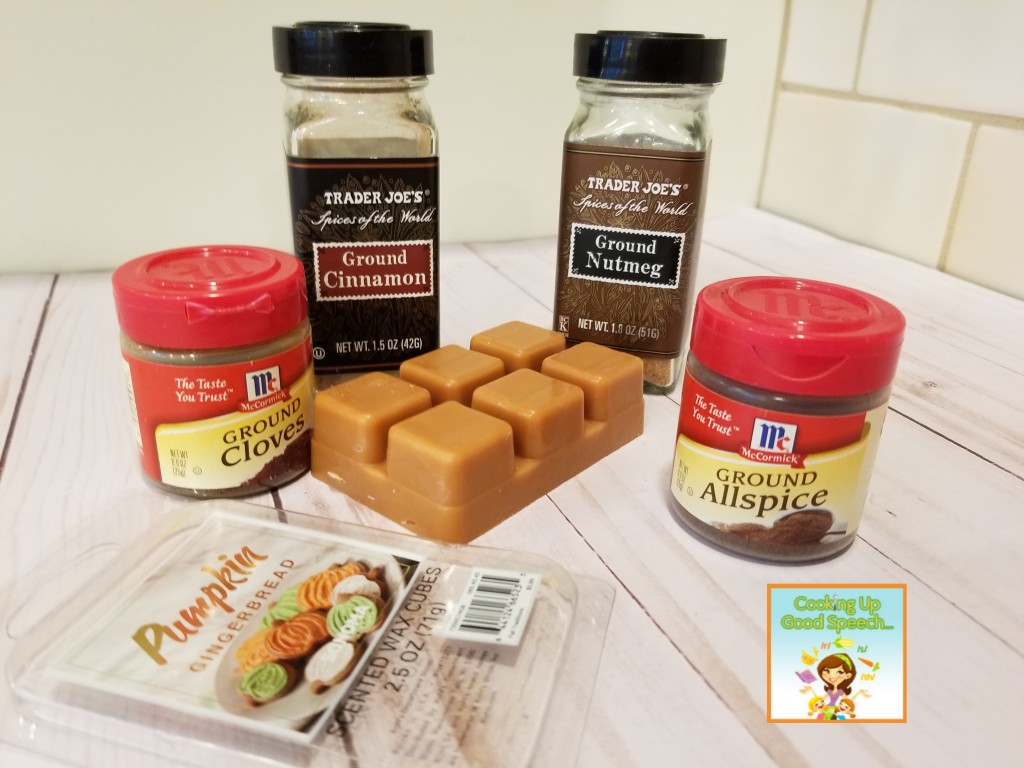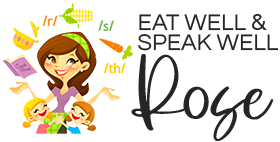Fall is bursting with sensory stimuli–visual, auditory, olfactory, tactile, and gustatory and provides so much inspiration for building students’ language skills. One motivating way is through sensory bins. Sensory bins are very popular among many SLPs, yet I often see this activity used primarily with younger students. However, the middle/high school SLP should not exclude this activity from their toolkit! I use sensory bins with my big kids too! I’m always reminding them to use their five senses to help them add ideas and details, so this hands-on exercise is an effective way to guide and scaffold their learning. Here’s how you can make this activity suitable for your ‘tweens and teens:
1- Collect objects related to the season. I found many of these around my house, therapy room, and a few at the dollar store. I included items that are themed around fall, Halloween, and harvest time. Be sure to use items that provide visual and tactile interest. Get creative with your selections. Add items that allow for smelling and tasting as well. Keeping with the fall theme, I put my contents into large black containers that reminded me of a cauldron (the black container is actually a dollar store drain pan used for cars!) and called this my sensory “brew’ instead of “bin.”
Included in my brew is a variety of real and plastic squash, gourds, plastic leaves and cattails, plastic spiders, bats and snakes, a spider web, straw, burlap, candy corn, a battery-operated candle, pumpkin-scented wax, spices: cinnamon, nutmeg, cloves, allspice. These objects will allow the students to utilize all of their senses to assist them with the language areas I plan on addressing.
I made one sensory bin (brew) with a fall harvest theme……

I added several spices that smell like fall! ( I included scented wax that I melt in a warmer at home. It makes my entire house smell like pumpkin pie! ) These items are fantastic ways to elicit descriptive language related to the smells of the season.

…and another with a Halloween/spooky/creepy theme…

The purpose of the bins is to spark interest and get my students motivated to expand, elaborate and provide detail in their verbal and written communication. We used the objects to address these goals:
- compare/contrast (i.e. leaves/hay bale, pumpkin/gourd, cinnamon/cloves)
- adjectives (describing)
- direction following (i.e. 3-step directions: add three candy corn to the cauldron, place an orange spider in the web and place the tarantula on the left side of the cauldron)
- sentence expansion (use the included freebies to write sentences that contain descriptive words and elaboration)
- narratives (incorporate 3-4 items to create a cohesive story)
These are challenging goals for many of my students with language-based learning disabilities, as they typically struggle with writing, listening, and organizing thoughts in order to verbalize effectively.
For those students who struggle to generate information independently, I provide a “word bank” to initially assist them, with the goal of having them produce the ideas on their own eventually. You can laminate this sheet or place a page protector over it and ask students to use a dry erase marker to circle the vocabulary that relates to the object(s) being discussed. Enter password: Happy Fall! to grab your free fall sensory word bank
For those students that need structure and help with the organization of ideas, I use graphic organizers (webs and Venn diagrams.) Use the diagram to compare/contrast items in yo0ur sensory bin and the other to brainstorm descriptive vocabulary. You can grab the organizers here by entering the password: pumpkin pie
I hope this activity gets your students motivated to work on their language goals. When the winter arrives, check out my winter and holiday-themed sensory bin for more multisensory ways to address your older student’s language goals.











Leave a Reply